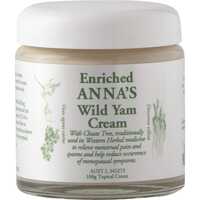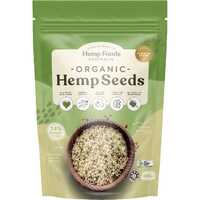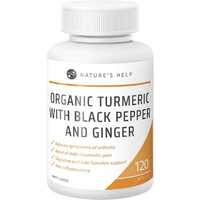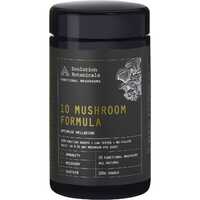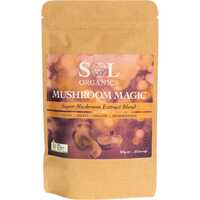Throughout human history, from the Stone Age to the modern day, humans have learned from the past. Doctors and health practitioners always look to previous generations, gaining new knowledge and learning from mistakes as they attempt to provide better healing. Even today, health remedies as old as time are being studied with new scientific techniques and rediscovered by current generations.
While traditional medicine is often erroneous and sometimes even dangerous, many of the foods our ancestors used are based on solid scientific principles. From medicinal mushrooms to ancient herbs and spices, from heirloom grains to exotic seaweeds, many of these ingredients have regained popularity as modern-day superfoods.
Let's analyse the relationship between traditional and modern medicine and take a look at some popular modern remedies with ancient roots.
Essential Links Between Nutrition and Medicine
Traditional cultures often had a holistic conception of health and well-being. While their medical knowledge was far from complete and was often rooted in religious beliefs, old-world remedies were often grounded in food products still available today. As a central aspect of folk medicine, traditional cultures consumed specific foods to treat acute conditions, support general health, and promote holistic wellness. As the world of medicine becomes increasingly divorced from these holistic practices, modern consumers are increasingly attracted to these ancient cultures and the foods they enjoyed.
The following ancient remedies are backed by modern science.
Medicinal mushrooms
Our ancestors have consumed mushrooms for thousands of years, both as food and medicine. Hippocrates, the father of modern medicine, classified amadou mushroom as an anti-inflammatory way back in 450 BC. On the other side of the world, in the early centuries of the Common Era, Chinese alchemists were also interested in medicinal mushrooms. From the indigenous peoples of North America to the tribes of northern Europe, mushrooms have long been appreciated for their potent medicinal properties.
Despite the long-standing use of mushrooms as a health tonic, modern medical science is just starting to understand why they're so powerful. Modern technology presents new methods for tissue culture testing and analysis, with the activities and synergies of mushroom constituents being realised for the first time. While mushrooms did not evolve to become medicine for humans, it has been an evolutionary advantage for humans to co-evolve with an environment that includes mushrooms.
The reason for our ignorance around mushrooms is multifaceted — partly due to the dangers and wonders associated with certain mushrooms and partly due to the ephemeral nature of their existence. For example, the largest known organism on Earth is the mycelial mat of a honey mushroom. While the mycelium structure survives for centuries, the fleshy fruit bodies exist for just a few days.
The following mushrooms are among the most beneficial:
- Lion's mane supports healthy brain function and neuron generation. It offers antioxidants and neuroprotective phytonutrients.
- Reishi mushroom is a beneficial sleep aid and potent immunomodulator. It offers polysaccharides for immune system support.
- Cordyceps mushroom helps to improve lung capacity and boost energy. It offers essential amino acids, fatty acids, and vitamins.
- Chaga mushroom helps to boost digestion and protect the skin. It offers polysaccharides, triterpenes, polyphenols, and minerals.
- Turkey tail mushroom supports immune system function. It offers protein-bound polysaccharides with positive immune effects.
- Shiitake mushroom supports cardiovascular health. It offers lentinan for immune boosting and eritadenine for cholesterol management.
- Maitake mushroom helps to maintain healthy blood pressure and immune function. It offers antioxidants and polysaccharides.
Herbs and spices
Certain herbs and spices have been used medicinally for centuries. In fact, traditional medicine is often referred to as herbal medicine. While the list of fragrant plants said to have health properties is almost endless, the following popular examples have been studied extensively:
Turmeric
Turmeric is loved for many things, including its taste, colour, and health-boosting goodness. The active compound in turmeric is curcumin, which gives the spice its distinctive yellow pigment and beneficial health properties. This popular spice has long been a central component of traditional Chinese medicine and Indian Ayurvedic medicine, and it spread to Africa and Jamaica centuries ago before hitting the West.
Turmeric works on several fronts, offering antimicrobial, antioxidant, anti-inflammatory, and anticancer properties. This spice is widely touted for things as diverse as sore muscles, inflammatory bowel disease, rheumatoid arthritis, and improved liver function. The bioavailability of turmeric is increased significantly when it's combined with agents like piperine, which is an alkaloid present in black pepper. While it may not be the cure for everything under the sun as sometimes reported, turmeric packs lots of goodness into a very colourful package.
Ginger
Ginger is a much-loved spice used around the world in foods, beverages, and medicine. For many centuries, it has been utilised in ancient Chinese, Ayurvedic, and Unani medicine traditions. Ginger has strong anti-inflammatory, antimicrobial, and anti-tumorigenic effects, with the biological mechanisms behind these actions studied heavily in modern science. Ginger also offers antioxidant, neuroprotective, antinausea, and antiemetic activities.
The beneficial bioactive constituents of ginger have been identified, including terpene and phenolic compounds such as gingerols, shogaols, and paradols. Gingerols are the major polyphenols in fresh ginger, including 6-gingerol, 8-gingerol, and 10-gingerol. Ginger offers effective protection against oxidative stress and inflammation, which are noted causes or influencing factors in numerous diseases.
Chilli pepper
Chilli pepper was used traditionally by many Asian cultures, and it also has Aztec and Mayan traditions. Chilli is associated with several health benefits, including issues as diverse as digestive support and cognitive function. Chilli is one of the most commonly used spices in the world, with people in Asian countries enjoying more exposure than those in the West. Chilli is loaded with even more vitamin C than oranges, which makes it great for boosting the immune system. Along with vitamin C, you also get lots of vitamin A, iron, and dietary fibre.
The capsaicin in chilli peppers helps to reduce inflammation and decrease the risk of heart disease. In fact, according to an analysis of diet and mortality data from four large international studies, chilli pepper offers some pretty amazing benefits. When compared with people who didn't eat chilli pepper or rarely consumed it, people who ate chilli pepper on a regular basis had a 26% lower rate of death from cardiovascular disease, a 23% lower rate of death from cancer, and a 25% lower rate of death from any cause.
Heirloom grains
Over the last few years, there has been growing interest in heirloom grains. While not a "remedy" as such, heirloom grains are pretty much the definition of traditional foods. They're grown from seeds that have been passed down from generation to generation, from varieties developed before the age of mass food production. Unlike regular wheat, rice, and corn grains, heirloom grains haven't been processed or genetically modified.
Popular examples of heirloom grains include spelt, einkorn, emmer, kamut, freekeh, barley, and sorghum. These grains have been studied compared to standard grains, and the results were pretty amazing. Diets based on ancient grains showed clear advantages in terms of anti-inflammatory and antioxidant activities. With many common diseases influenced by inflammation or free radical damage, consuming these grains on a regular basis could offer real long-term health benefits.
Seaweeds
A number of ancient cultures used seaweed for food and medicine. While seaweeds are often associated with Asian cultures, they were also loved by ancient Greeks, ancient Romans, early northern Europeans, and first Americans. There is evidence of seaweed being used to treat goitre from 1600 BC in China, and ancient Japanese enjoyed at least six types of seaweed for everyday cooking and medicine.
In ancient Greece and Rome, and also across Asia, seaweed was used to treat parasitic worm infections, among other medical applications. Some of the first Americans also enjoyed healthy doses of seaweed, with indigenous people in North and South America chewing seaweed into clumps for medicinal purposes.
Seaweed has enjoyed a resurgence during modern times, as it offers tremendous nutritional benefits in a small and easy-to-consume package. A range of seaweeds is available from health food stores and some supermarkets, including wakame, dulse, kombu, kelp, nori, sea lettuce, and chlorella. All these seaweeds are highly versatile, and they can be eaten in salads, soups, sushi, and stews.
Seaweeds contain vitamins A, B1 and B2, C, E, and K. Most varieties also contain calcium, folate, potassium, iron, manganese, and copper. Seaweed is an excellent source of iodine, which is critical for thyroid function and general health. It also includes lots of prebiotics for a healthy gut and the antioxidant fucoxanthin for blood sugar control. While more studies are needed, seaweed products may also help to boost immune health and reduce cholesterol levels.
If you're looking for healthy ancient remedies to fuel your busy modern lifestyle, Healthy Being has everything you need. From snacks and meals to household and beauty products, our website is full of great products at unbeatable prices. Shop now and enjoy free shipping options across Australia and worldwide delivery!


 Certified Organic
Certified Organic Vegan Friendly
Vegan Friendly  Vegetarian
Vegetarian Organic Ingredients
Organic Ingredients Dairy Free
Dairy Free Gluten Free
Gluten Free Keto Friendly
Keto Friendly

















